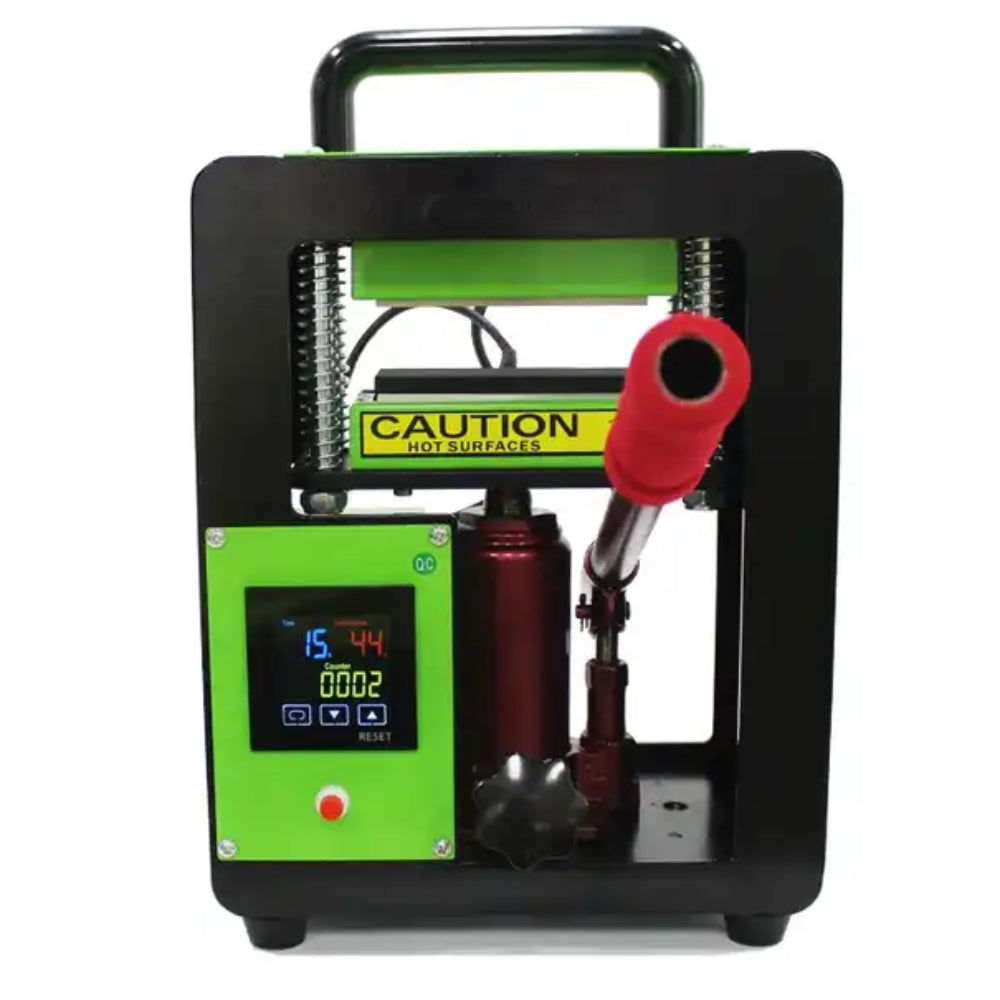
Presse à rosin, moules de pré-pressage, papier sulfurisé, sacs à rosin… De quoi ai-je besoin ?
Pour choisir le meilleur équipement de presse à rosin, plusieurs facteurs clés sont à prendre en compte. D’abord, la qualité de l’équipement et sa capacité à produire une rosin de haute qualité : recherchez un matériel durable et facile à utiliser. Tenez également compte du coût et vérifiez qu’il s’intègre à votre budget. Enfin, comparez les différentes marques et modèles afin de trouver celui qui répond le mieux à vos besoins.
Pour fabriquer du rosin, un extrait végétal concentré obtenu par un procédé sans solvant, vous aurez besoin de certains équipements spécifiques. Voici une liste de base des éléments essentiels :
1. Presse à chaud plate
– Une presse à chaud plate est un équipement essentiel pour fabriquer du rosin. Elle applique chaleur et pression sur la matière de cannabis afin d’en extraire la résine.
2. Papier sulfurisé
– Le papier sulfurisé est utilisé pour contenir la matière de cannabis pendant le pressage. Il résiste à la chaleur et empêche la rosin d’adhérer aux surfaces.
3. Matière végétale/fleurs de qualité
– La matière de départ pour fabriquer du rosin est généralement une fleur de cannabis ou du hash de haute qualité. Plus la matière de départ est bonne, plus le rosin obtenu sera de qualité.
4. Sachets ou filtres à rosin
– Il s’agit de sachets à maillage micron ou de filtres qui contiennent la matière de cannabis pendant le pressage. Ils aident à filtrer la matière végétale pour obtenir une rosin plus propre.
5. Contrôle de la température
– Certaines presses à chaud sont équipées de fonctions de contrôle de la température. Maîtriser la température est important pour obtenir la consistance et la saveur souhaitées du rosin.
6. Minuterie
– Disposer d’une minuterie peut vous aider à maintenir la constance de votre processus d’extraction. Elle garantit que vous pressez la matière de cannabis pendant une durée identique à chaque fois.
7. Outils de collecte
– Des outils comme un dabber ou un grattoir de collecte servent à récupérer la rosin après l’extraction. Ils doivent être fabriqués dans des matériaux qui ne contamineront pas la rosin.
8. Moule de pré-pressage
– Un moule de pré-pressage est un outil utilisé pour façonner votre matière végétale en une « galette », ce qui rend le processus d’extraction plus efficace.
9. Contenants de stockage
– Pour conserver le rosin final, vous aurez besoin de contenants anti-adhésifs fabriqués dans des matériaux qui ne réagiront pas avec l’extrait.
10. Gants
– Le port de gants permet de maintenir la propreté pendant le processus d’extraction et d’éviter que des contaminants ne pénètrent dans le rosin.
11. Surface de pressage
– Une surface solide et résistante à la chaleur pour la presse est indispensable. Certaines personnes utilisent une table robuste ou un établi.
Il est important de choisir un équipement adapté à l’ampleur de votre activité, que vous produisiez de la rosin pour un usage personnel ou à plus grande échelle. De plus, priorisez toujours la sécurité et suivez les bonnes pratiques lorsque vous travaillez avec la chaleur et la pression.
